Coastal and Estuarine Research Federation 2017 Conference
Bill Dennison ·The 2017 Coastal and Estuarine Research Federation (CERF) Conference in Providence, Rhode Island had the theme "Coastal science inflection point: celebrating successes, learning from challenges." The University of Maryland Center for Environmental Science (UMCES) always has a strong presence at CERF conferences, but because this was the first conference hosted on the East Coast since 2011, we had a particularly large delegation. This delegation included most of the Integration and Application Network (IAN) and the UMCES at the Chesapeake Bay Program staff. Overall, This CERF conference had the largest attendance recorded, with over 1,600 attendees. This number included about 400 graduate students, 40 undergraduates and even some younger scientists, which bodes well for CERF’s future.
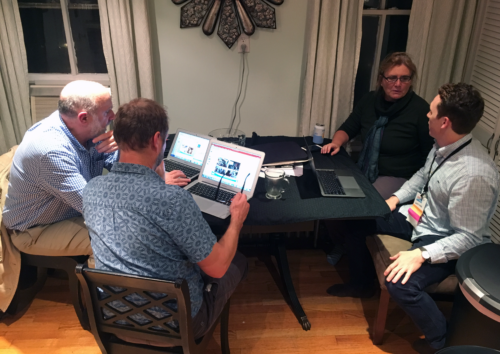
The quality of talks at this year’s CERF conference increased this year. I may have assisted this improvement through a science communication webinar for CERF members, but regardless the reasons, the talks and posters were better than during previous years. I observed many talks in which the science applications were emphasized, especially compared with previous CERF conferences. Another change that I appreciated involved the talks. The organizers targeted the older, established participants with five minute ‘ignite’ talks, and allowed students or other junior members the full fifteen-minute time slots. I really like this approach.
One of the events that I participated in was an interactive pre-conference workshop called "Building and Embracing CERF Diversity." Treda Grayson Dan lead this workshop and Diana Kardia facilitated it. The focus of this workshop involved understanding hidden biases towards minorities and different cultures and brainstorming ways to make CERF more inclusive and more diverse. It was an informative and well-attended session; even the CERF President Hilary Neckles showed up. At the end of the workshop we resolved to become more vocal and active in diversifying CERF and the field environmental science overall.
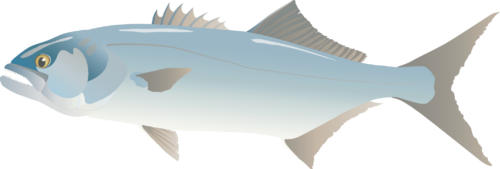
The UMCES delegation contributed to CERF activities by sponsoring a booth in the exhibit hall. We asked current UMCES employees to place a pin in Google Earth on locations where they worked and a pin in the location where they had the most impact. We asked former staff to place a pin where they moved after working with us, and a pin in the location where they made the most impact. The resulting map illustrated how global UMCES has become. UMCES also hosted a reunion for current and former staff in which its president Peter Goodwin and several other senior staff provided brief updates. Former President Don Boesch also attended the Virginia Institute of Marine Science and the Louisiana State University reunions.
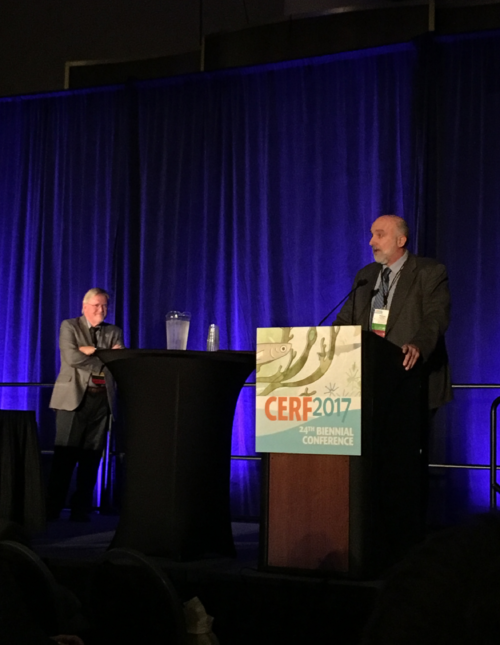
After the conference, IAN employees reflected on the main messages of CERF2017. We decided that one of themost important themes was that of validating people's work on science application. This appreciation was demonstrated by two new stewardship awards. I described the Margaret A. Davidson Stewardship Award in a previous blog. The other award was called the Coastal Stewardship Award, won by the Tampa Bay Nitrogen Management Consortium; National Estuary Program. Several people told me that the Stewardship Awards were a validation of the efforts in making science relevant to society.
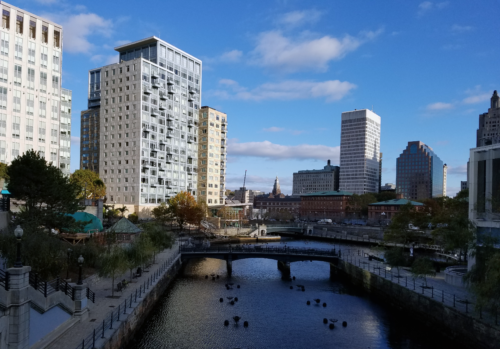
The conference highlights for me were the "extras:" activities beyond the science presentations. For example, Rob Condon from the University of North Carolina has been mentoring middle school children in after school programs. These young scientists were doing interesting science projects, could explain the processes involved, and had an amazing amount of enthusiasm. Another highlight was the University of Rhode Island’s Coastal Cabaret. Five singers (John Birl, Susan Boyce, Marilyn Corrigan, Julie Ingram-Rogers, and Alec Rogers) performed witty and scientifically accurate songs with lyrics written by Judith Swift and Charles Cofone. I also appreciated the the mentor-student relationships that CERF assigned to volunteers. Cathy Wigand mentored Suzi Spitzer and Tiffany Crawford mentored Vanessa Vargas.
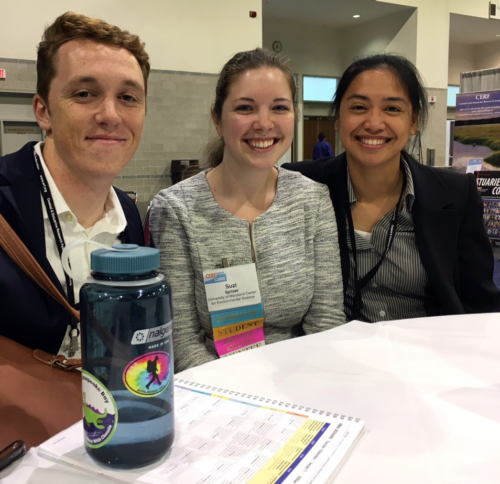
The next CERF meeting will be 4-8 November 2019 in Mobile, Alabama. I look forward to the opportunity to meet up with CERF folks again.
About the author
Bill Dennison

Dr. Bill Dennison is a Professor of Marine Science and Vice President for Science Application at the University of Maryland Center for Environmental Science.

